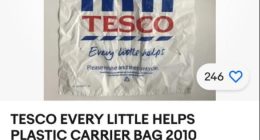Yes, it makes sense for restaurants, but it can also help save other businesses and give your community a boost.
April 6, 2020 5 min read
Opinions expressed by Entrepreneur contributors are their own.
The current global health crisis is affecting everyone. No matter where you are or what industry you work in, you’re feeling it. Brick-and-mortar businesses are suffering a lot, as many had to close outright or switch to delivery or takeout only. Even some of the essential stores that are open are looking for new ways to protect their workers and customers as they provide those much-needed items.
A creative way businesses can stay open while keeping people safe is by offering curbside pickup for orders. It’s a sort of drive-thru for businesses that don’t typically do that. Curbside pickup offers several benefits, mainly the fact that you’d be protecting customers who are unable to come inside your stores and your employees who are still working. But also, you’re maintaining your ability to stay open and serve your community who are facing unprecedented changes to daily life.
Let’s take a closer look at what curbside pickup can mean to your business and some things to consider if you want to set it up.
Related: Long Beach Beer Lab Could Have Closed; Instead, They Became Essential
Help Your Community
When you offer curbside pickup at your business, you’re allowing customers to buy from you online and then drive to your location (or “curb”) to pick it up, without having to leave their car. It’s a modification of the “order online, pick up in-store” policy many stores, like Best Buy and Target, have had in the past. Customers used to choose this option because it was more convenient for them, and businesses liked it because it reduced shipping costs and packaging usage. With today’s heightened public-health concerns, it’s just safer for everyone to do curbside pickup.
Many stores and businesses have been deemed essential services for their communities, so they need safer ways to stay open. But even in areas where there are no restrictions on staying open, businesses may want to consider switching to curbside pickup now, so they’re ready for future guideline changes. Businesses that don’t require customers to physically be in the stores to shop can use curbside pickup as a chance to close their locations and keep people safe while still serving.
From a business standpoint, you’ll use up existing inventory, keep employees working and keep revenue coming in, even if it’s decreased. Employees will see that you’re trying your best to keep them safe while they work. Customers will be happy they can still pick up their orders, food and other items in these uncertain times.
Curbside pickup protects customers and employees, as it limits the amount of person-to-person contact. Some businesses are allowing contactless pickup via their drive-through windows, as some fast-food restaurants are doing right now.
Another option is to do full curbside drop-off where customers drive up, and after verifying the order and customer, employees place the order directly into the car trunk.
Considerations to Curbside Pickup
First, before deciding whether to do curbside pickup, all businesses should follow the guidelines of their local government and public-health officials. There may be different guidelines in place, depending on your location.
Next, it’s essential to think of how to schedule and organize employees in your location. Determine the process for picking the order, assembling it, packaging it for pickup and customer notification. If you’ve already been doing in-store pickups, you probably already have this sorted out, but if not, take the time now to get organized.
Set up pickup spots outside your locations indicating exactly where people should park to wait for their order. Some locations have designated pickup spots with signs, while others have temporary signs set up outside their doors or loading docks. No matter your choice, make it obvious where people should go.
Send customers clear instructions on what to do when they arrive and what information they need to bring to verify their order. Grocery stores and retail stores often ask customers to text or call a phone number to let employees know they’ve arrived. For locations not typically open for retail pickups, consider having an employee available with a list of the orders so they can cross them off once people arrive.
Decide whether employees will place orders directly into the trunks of cars or if they will hand them off to customers with minimal contact. Let customers know ahead of time so they can prepare too, as some customers may have to open their trunks manually.
Related: 5 Things Advertisers Should Consider Amidst the COVID-19 Pandemic
It’s a strange time for business right now. You have to come up with creative ways to stay open as the world juggles with this ongoing public-health crisis. If you’re able (or are required) to stay open, offering curbside pickup is an excellent way to protect both your employees and customers. With a little planning, you can use it now and even keep it going in the future once things calm down.
This article is from Entrepreneur.com









